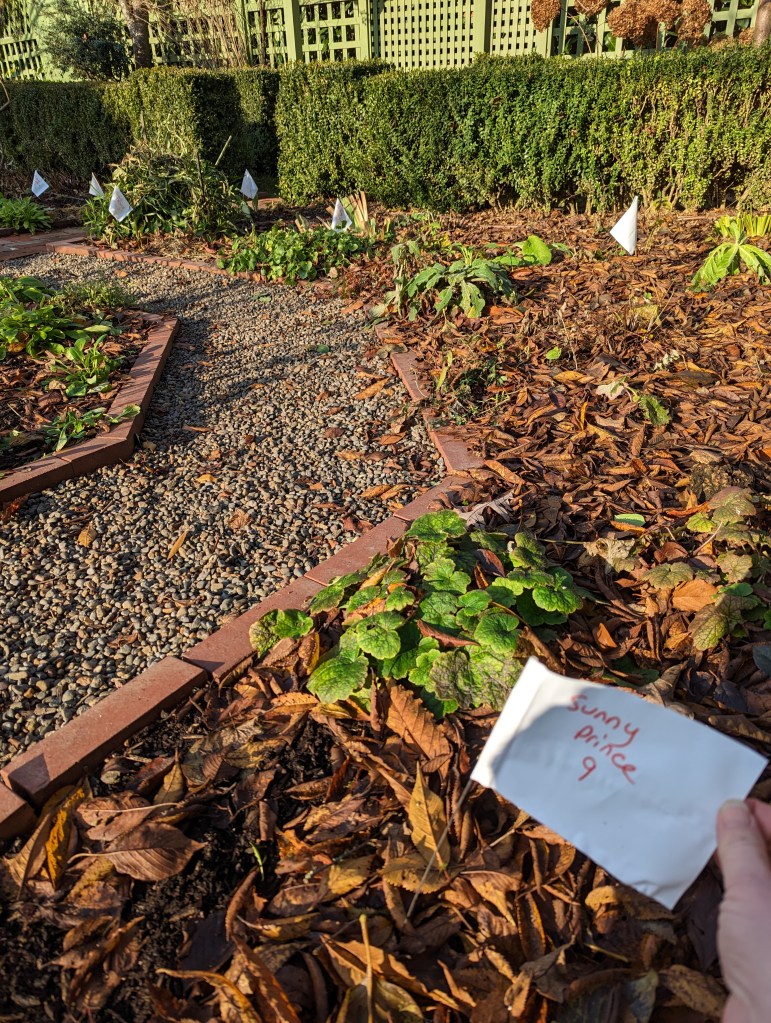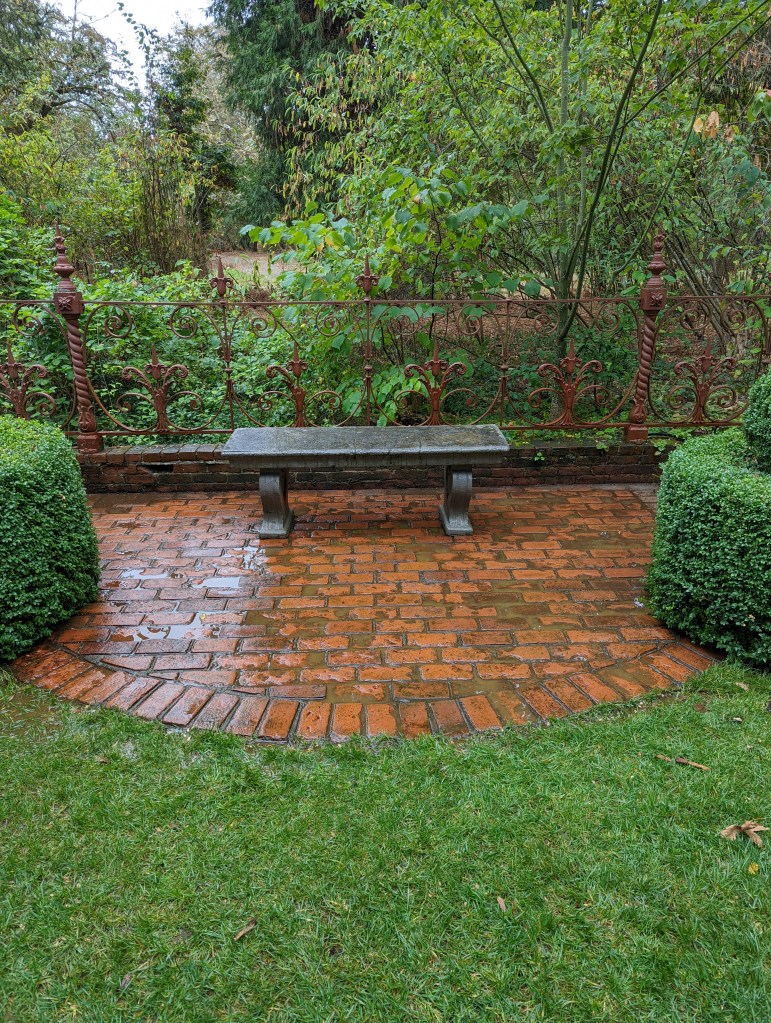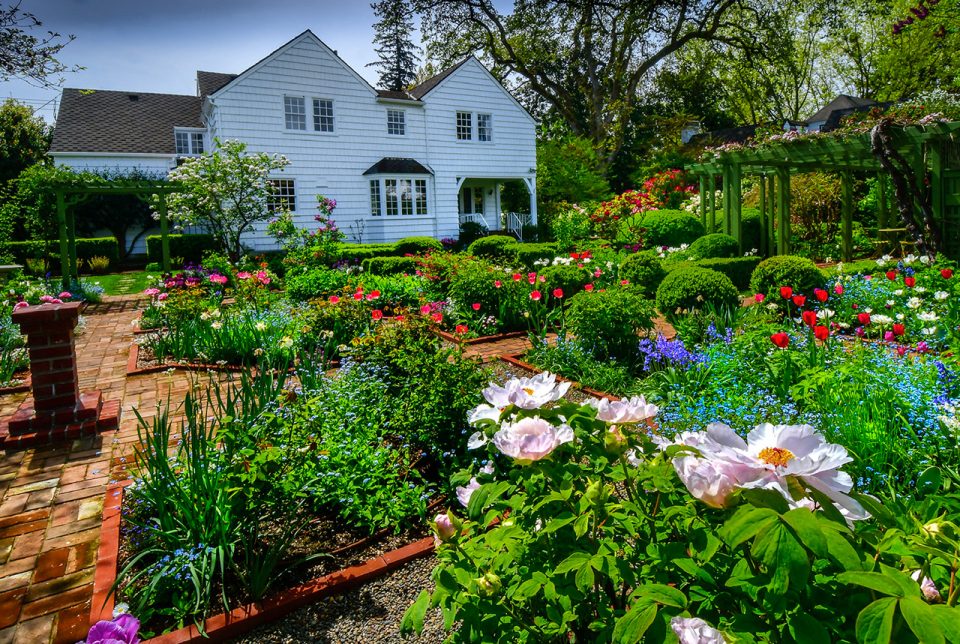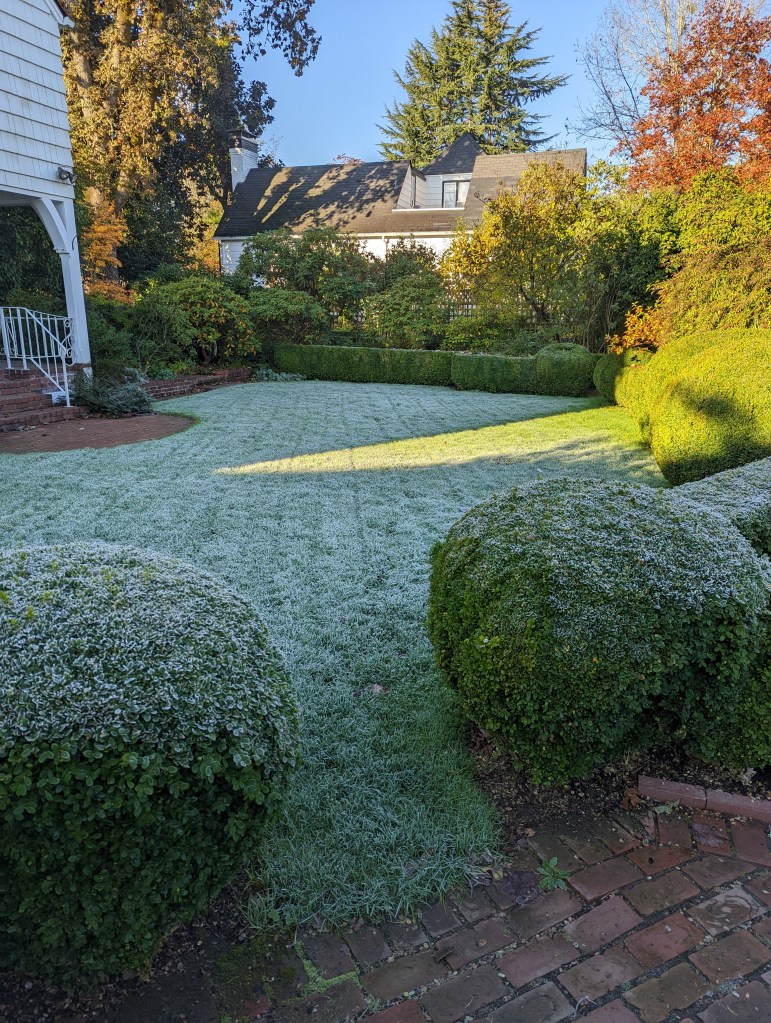Season’s Greetings!
My name is Hannah Curry and in April of 2022, I became the Head Gardener for the Lord & Schryver Conservancy. I am excited to be part of the team and I’m looking forward to all that we’ll accomplish in the future.
Winter is a time of rest and dormancy for many plants in the Pacific Northwest, but here in the gardens of Lord & Schryver there is always something of interest and beauty to enjoy. Back in April I wondered what the winter months would be like, what would keep me busy while most of the plants were sleeping? Turns out, there’s plenty to keep me busy this time of year between leaves falling like blankets, tulip planting and weeds poking up. Here’s a glimpse of what we’ve been up to lately in the historic gardens.





Garden flags were used at Gaiety Hollow this year to indicate the quantity and variety of bulbs planted in each area.


When you’ve run out of flowers to gaze at and the green foliage starts to blur against the grey skies, one can appreciate the beauty of the hardscaping in the gardens. Shown here are some of the historic bricks in the Scroll Garden with photos taken before and after a good cleaning. These bricks were grimy and slippery before volunteer Lysa and I gave them a good scrub. The final step was to spray the bricks with a product called “Wet & Forget”, which prevents moss and algal growth. The bright red bricks compliment the intricacies of the ironwork in the fence behind and really set-off the greens of the boxwood and lawns.
Remember those leaves I mentioned at the beginning of this post? Raking is just one way to remove leaves from your lawn, and it’s a tiring one, sure to fill those yard debris bins quickly. Enter: mulch-mowing! See that clean line on the left of the photo? That was accomplished by using an electric mower set high which scoops up and shreds the fallen leaves with minimal effort. Mulched leaves can be added to garden beds, composted or placed in your yard debris bins- and they won’t take up as much space, either.
Thanks for taking the time to read my very first blog. From all of us here at the Lord & Schryver Conservancy, we wish you a wonderful holiday season! We hope you’ll visit us soon.
Hannah






Hannah, this blog is marvelous! Thank you.
Beautiful photos of the garden. Thanks for continuing the vision of Lord and Schryver. Priscilla
Thanks for the post. The garden looks very nice. Thank you for your efforts.
Welcome, Hannah, we’re happy to have you!
Hannah, What a lovely gift is your pictorial tour, with good comments and explanations, of our beloved L&S gardens. Thank you for your careful caretaking, now and all year. We’ll all enjoy those tulips with you in the spring. Meanwhile, Happy Holidays to you and yours.
Anita Engberg (Bush conservatory caretaker #2)
Thank you for your wonderful, seasonal blog post!
Thanks for the photos. Since I am no longer able to visit I enjoy seeing what is going on. Welcome Hannah.
Hannah…..Neat photos of the frost and quiet in the garden in December, but of course that doesn’t mean nothing is happening. And with the winter solstice just days away, can spring be far behind? Has been great working with you this past year. Chet
PS Really like the toadstool pics!
Thank you, Hannah, for a wonderful first blog. It is beautiful to look at and informative to boot!
Marilyn K
Thank you for your feature on gardens in the winter. Sometimes we miss out on the small and hiding elements ofthe garden…so important to the overall health and well being of the emerging more showy plants!
We love having you as our manager!